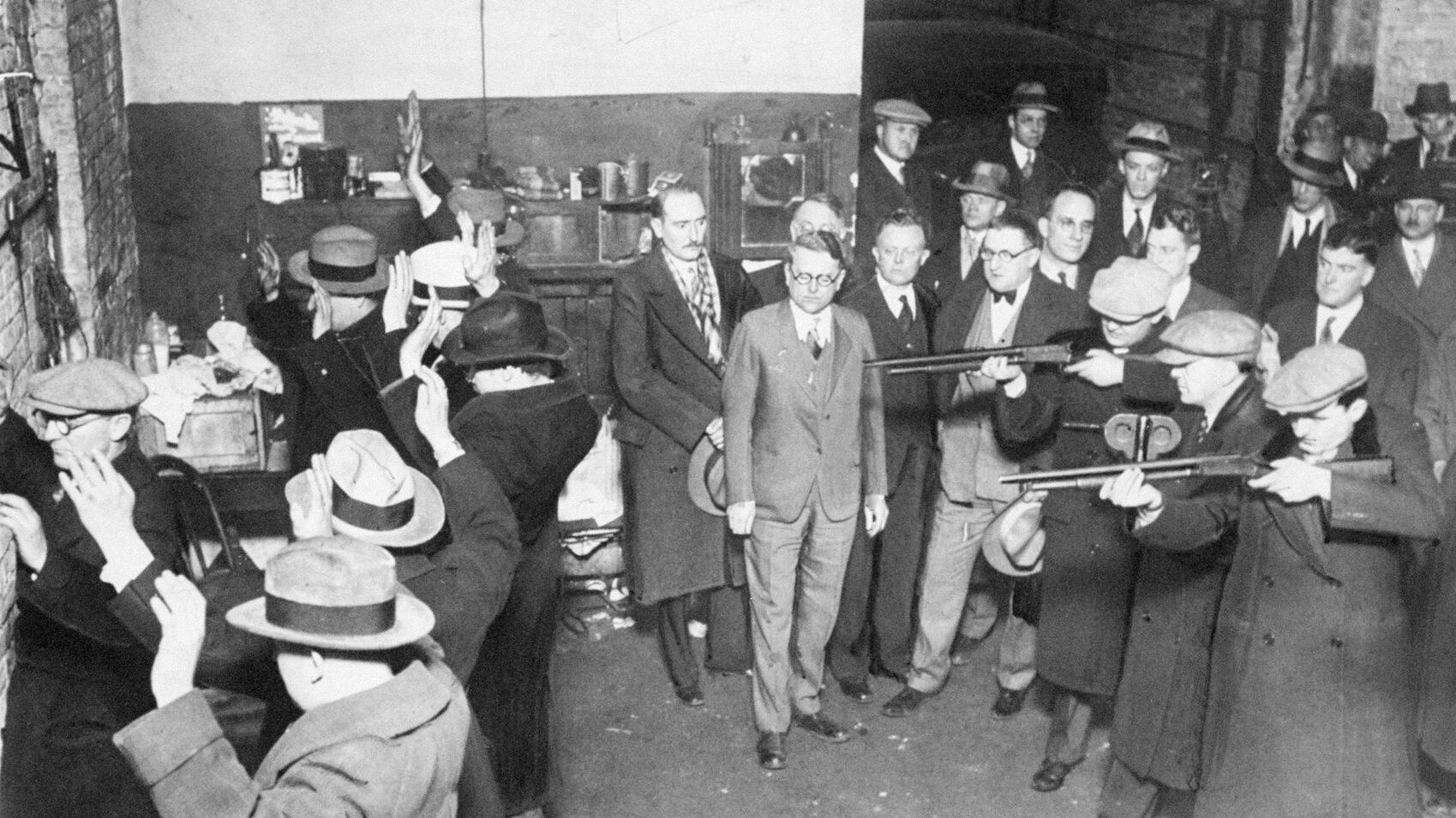
Who was Madame Delphine LaLaurie, and why does her name evoke such horror? Born into wealth on March 19, 1787, in New Orleans, Delphine LaLaurie became infamous for her brutal treatment of enslaved people. Despite her public image as a gracious socialite, her private life revealed a darker reality. Married three times, she lived in a grand mansion at 1140 Royal Street, where she subjected her slaves to unimaginable cruelty. The horrific conditions were exposed after a fire in 1834, leading to public outrage and her escape to France. Her story continues to haunt New Orleans, blending history with legend.
Key Takeaways:
- Madame Delphine LaLaurie, a wealthy New Orleans figure, led a life of tragedy and cruelty, leaving a dark legacy that continues to captivate audiences through folklore and popular culture.
- Despite her public image of kindness, Madame LaLaurie's treatment of enslaved people was horrific, sparking outrage and a mob attack on her mansion, leaving a lasting impact on cultural perceptions of slavery.
Early Life and Family Background
Madame Delphine LaLaurie, born Marie Delphine Macarty, is one of New Orleans' most infamous figures. Her life was marked by wealth, social standing, and a dark legacy of cruelty.
-
Delphine LaLaurie was born into a wealthy family in New Orleans on March 19, 1787. Her father, Louis Barthelemy de Macarty, was knighted as the Chevalier of the Royal and Military Order of St. Louis.
-
Her family owned 1,344 acres of land. Her mother, Marie Jeanne Lerable, was known for hosting extravagant parties that lasted until late at night.
Marriages and Personal Life
Delphine's personal life was filled with multiple marriages, each marked by tragedy and complexity.
-
At just 14 years old, Delphine married her first husband, Ramon López y Ángulo de la Candelaria, a 35-year-old officer of the Spanish Crown.
-
Ramon died in a shipwreck off the coast of Cuba in 1805, leaving Delphine pregnant. She gave birth to their child, Marie Delphine Francisca Borja López y Angulo de la Candelaria, shortly after his death.
-
In 1806, Delphine married Jean Paul Blanque. They had four children together, but Blanque died suddenly at the age of 50, leaving Delphine deeply in debt.
-
Delphine's father left her a sizable inheritance after his death in 1824, which helped alleviate her financial troubles.
-
In 1826, Delphine began a romance with Dr. Louis LaLaurie, a French chiropractor. They married in 1828, despite their reportedly unhappy relationship.
The LaLaurie Mansion
The LaLaurie Mansion became a symbol of wealth and horror, reflecting Delphine's dual nature.
-
The couple purchased an unfinished home at 1140 Royal Street in New Orleans’ French Quarter and completed it in the Federal architectural style.
-
In public, Madame LaLaurie was known for her kindness and generosity, often hosting lavish parties and social events.
Cruelty Behind Closed Doors
Despite her public image, Delphine's treatment of enslaved people was horrific and brutal.
-
The LaLaurie Mansion housed numerous enslaved people, who were subjected to inhumane conditions and brutal punishments.
-
Neighbors began to suspect that Madame LaLaurie was treating her enslaved people with extreme cruelty. They noticed that the slaves looked haggard and exhausted.
-
A lawyer investigated the allegations of cruelty but found no evidence of mistreatment. However, the rumors persisted.
The Incident with Lia
One tragic incident highlighted Madame LaLaurie’s cruelty and brought her actions to light.
-
A 12-year-old enslaved girl named Lia accidentally pulled a tangle while brushing LaLaurie’s hair. LaLaurie chased her with a whip, prompting Lia to run to the roof and fall to her death.
-
LaLaurie attempted to cover up Lia’s death by dumping her body in a well. However, there were enough witnesses that the authorities came to investigate.
-
LaLaurie was found guilty of illegal cruelty and forced to forfeit nine enslaved people as a result.
-
LaLaurie managed to circumvent the punishment by having her family members and friends purchase the enslaved people and sell them back to her.
The Fire and Discovery
A fire at the mansion revealed the extent of Delphine's cruelty, shocking the community.
-
On April 10, 1834, a fire broke out at the LaLaurie Mansion, started by a 70-year-old cook who was chained to the stove by her ankle.
-
Rescuers discovered bound slaves in the attic who showed evidence of cruel, violent abuse over a long period.
-
The discovery of the abused slaves sparked outrage among the community. A mob of New Orleans citizens attacked the LaLaurie Mansion, causing significant damage.
Escape and Legacy
Madame LaLaurie escaped justice, but her legacy of cruelty remains a dark chapter in history.
-
Madame LaLaurie escaped to France with her family, leaving behind the ruins of her once-grand mansion.
-
The legend of Madame LaLaurie has persisted in folklore, with stories of her cruelty and abuse being passed down through generations.
-
Madame LaLaurie has been featured in popular culture, including the third season of the TV series American Horror Story, where Kathy Bates portrayed her.
Historical Accounts and Cultural Impact
Historical accounts of Madame LaLaurie’s crimes vary, but her impact on cultural perceptions of slavery and oppression is undeniable.
-
Historical accounts of Madame LaLaurie’s crimes vary in detail. Some describe extreme brutality, while others provide more speculative details.
-
The LaLaurie Mansion, although rebuilt after the fire, remains a landmark in the French Quarter due to its historical significance and architectural style.
-
Despite her cruel actions, Madame LaLaurie maintained her position in New Orleans society until the discovery of her crimes.
-
The story of Madame LaLaurie has had a lasting impact on cultural perceptions of slavery and oppression.
Complex Family Dynamics
The dynamics within the LaLaurie household were complex, adding to the tragic nature of her story.
-
Madame LaLaurie reportedly treated her own daughters with the same cruelty she inflicted on her slaves.
-
While found guilty of illegal cruelty, LaLaurie managed to avoid severe legal consequences by having her slaves bought back by her family and friends.
Community Reaction and Historical Documentation
The community's reaction to Madame LaLaurie’s crimes was one of outrage and horror, but historical documentation is limited.
-
The discovery of the abused slaves sparked a mob attack on the mansion, highlighting the deep-seated anger and frustration felt by those who had witnessed or heard about her cruelty.
-
Historical documentation of Madame LaLaurie’s crimes is limited, with many accounts relying on secondary sources and speculation.
Tourism and Cultural Representation
The LaLaurie Mansion has become a tourist attraction, and Madame LaLaurie has been represented in various forms of media.
-
The LaLaurie Mansion has become a tourist attraction, with many tours focusing on the horrific events that took place there.
-
Madame LaLaurie has been represented in various forms of media, including literature, film, and television.
Historical Preservation and Folkloric Accounts
Efforts have been made to preserve the historical significance of the LaLaurie Mansion, and folkloric accounts of her cruelty continue to captivate audiences.
-
Efforts have been made to preserve the historical significance of the LaLaurie Mansion, although it is currently owned by a private party and not open for tours.
-
Folkloric accounts of Madame LaLaurie’s abuse and murder of enslaved people have been passed down through generations.
-
Madame LaLaurie’s legacy continues to influence modern discussions about slavery, oppression, and the treatment of marginalized groups.
The Dark Legacy of Madame LaLaurie
Madame Delphine LaLaurie’s story is a chilling reminder of the cruelty that can hide behind a facade of wealth and social standing. Born into privilege, she used her position to inflict unimaginable suffering on those she enslaved. Her public image of kindness starkly contrasted with the horrors discovered in her mansion. The fire in 1834 exposed her brutal treatment of enslaved people, leading to her escape to France and leaving a legacy of horror that still haunts New Orleans. The LaLaurie Mansion stands as a grim symbol of her actions, drawing tourists and sparking discussions about the dark chapters of history. Her story, immortalized in folklore and popular culture, serves as a stark reminder of the atrocities committed during the era of slavery and the importance of remembering these dark times to ensure they are never repeated.
Frequently Asked Questions
Was this page helpful?
Our commitment to delivering trustworthy and engaging content is at the heart of what we do. Each fact on our site is contributed by real users like you, bringing a wealth of diverse insights and information. To ensure the highest standards of accuracy and reliability, our dedicated editors meticulously review each submission. This process guarantees that the facts we share are not only fascinating but also credible. Trust in our commitment to quality and authenticity as you explore and learn with us.


